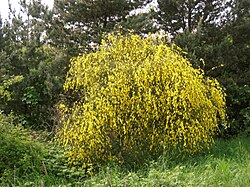**Group 1: Shrub Definition and Characteristics**
– Shrubs are perennial woody plants with persistent stems above ground.
– They are distinguished from trees by their height and multiple stems.
– Theophrastus classified plants into trees, shrubs, and herbs.
– Small shrubs, less than 2m tall, are often termed as subshrubs.
– Shrubs are woody plants less than 8 meters high with multiple stems at or near the ground.
– Structural characteristics categorize shrubs based on height and foliage cover.
– Different forms of shrubs include closed-shrubs, open-shrubs, tall shrubland, etc.
– Shrub vegetation can vary in density and foliage cover.
**Group 2: Uses and Cultivation of Shrubs**
– Shrubs are used in gardens and parks for aesthetic appeal.
– An area of cultivated shrubs in a park or garden is known as a shrubbery.
– Some shrubs respond well to renewal pruning for long new stems.
– Suitable species of shrubs can be clipped as topiary for dense foliage.
– Selective pruning helps reveal the structure and character of shrubs.
– Shrubs in gardens are often cultivated for their flowering and aesthetic appeal.
– Benefits of Shrub Pruning: promotes healthy growth, enhances appearance, increases flower and fruit production, controls pests and diseases, improves air circulation.
**Group 3: Types and Classifications of Shrubs**
– Some shrubs can develop into tree form under ideal conditions.
– Different types of shrubland include fynbos, maquis, and shrub-steppe.
– Shrubs in gardens are often cultivated for their flowering and aesthetic appeal.
– Shrubland may have distinct plant species and foliage cover.
– Types of shrubland include closed-heath, low open shrubland, etc.
**Group 4: Shrub Pruning Guidelines**
– When to Prune Shrubs: timing for different types of shrubs.
– Tools for Shrub Pruning: hand pruners, loppers, pruning saw, hedge shears, sharpening tools.
– Techniques for Shrub Pruning: remove dead branches, cut at a 45-degree angle, prune to shape and thin out shrubs.
– Common Mistakes in Shrub Pruning: over-pruning, wrong timing, incorrect tools, neglecting disinfection, ignoring natural growth habit.
**Group 5: Resources and Information on Shrubs**
– Resources for plant identification and biodiversity management are available.
– Life spans of small trees and shrubs can vary.
– The coffee plant falls on the tree-shrub boundary.
– Various books provide information on shrub cultivation and design.
This article needs additional citations for verification. (October 2018) |
A shrub or bush is a small-to-medium-sized perennial woody plant. Unlike herbaceous plants, shrubs have persistent woody stems above the ground. Shrubs can be either deciduous or evergreen. They are distinguished from trees by their multiple stems and shorter height, less than 6–10 m (20–33 ft) tall. Small shrubs, less than 2 m (6.6 ft) tall are sometimes termed as subshrubs. Many botanical groups have species that are shrubs, and others that are trees and herbaceous plants instead.


Some define a shrub as less than 6 m (20 ft) and a tree as over 6 m. Others use 10 m (33 ft) as the cutoff point for classification. Many trees do not reach this mature height because of hostile, less than ideal growing conditions, and resemble shrub-sized plants. Others in such species have the potential to grow taller in ideal conditions. For longevity, most shrubs are classified between perennials and trees. Some only last about five years in good conditions. Others, usually larger and more woody, live beyond 70. On average, they die after eight years.
Shrubland is the natural landscape dominated by various shrubs; there are many distinct types around the world, including fynbos, maquis, shrub-steppe, shrub swamp and moorland. In gardens and parks, an area largely dedicated to shrubs (now somewhat less fashionable than a century ago) is called a shrubbery, shrub border or shrub garden. There are many garden cultivars of shrubs, bred for flowering, for example rhododendrons, and sometimes even leaf colour or shape.
Compared to trees and herbaceous plants, perhaps a relatively small number of shrubs have agricultural or commercial uses for example blueberry bushes which are cultivated for their berries. Apart from the several berry-bearing species (using the culinary rather than botanical definition), few are eaten directly, and they are generally too small for much timber use unlike trees. Those that are used include several perfumed species such as lavender and rose, and a wide range of plants with medicinal uses. Tea and coffee are on the tree-shrub boundary; they are normally harvested from shrub-sized plants, but these would be large enough to become small trees if left to grow instead.
